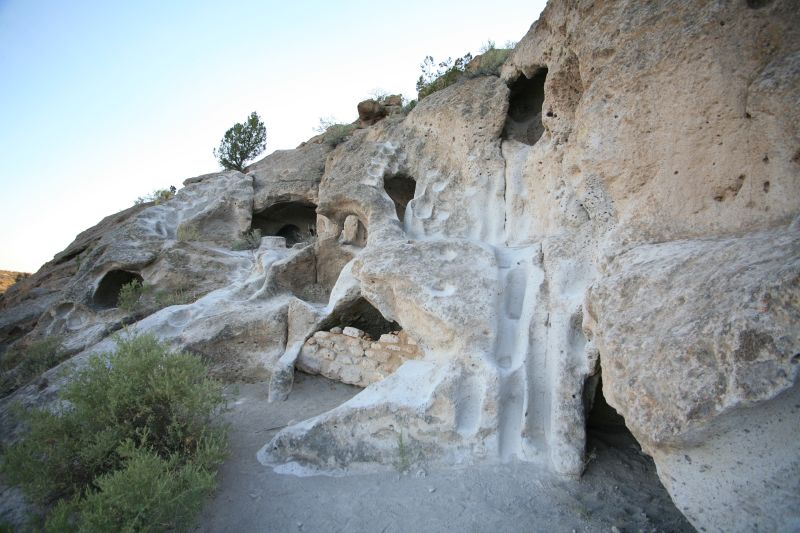Cliff-dwelling on:
[Wikipedia]
[Google]
[Amazon]

 In
In

 In
In archaeology
Archaeology or archeology is the scientific study of human activity through the recovery and analysis of material culture. The archaeological record consists of artifacts, architecture, biofacts or ecofacts, sites, and cultural landsca ...
, cliff dwellings are dwellings formed by using niches or caves in high cliffs, and sometimes with excavation or additions in the way of masonry.
Two special types of cliff dwelling are distinguished by archaeologists: the cliff-house, which is actually built on levels in the cliff, and the cavate, which is dug out, by using natural recesses or openings.
Rock-cut architecture
Rock-cut architecture is the creation of structures, buildings, and sculptures by excavating solid rock where it naturally occurs. Intensely laborious when using ancient tools and methods, rock-cut architecture was presumably combined with quarry ...
generally refers to rather grander temples, but also tombs, cut into living rock, although for example the Ajanta Caves in India, of the 2nd century BCE to 5th century CE, probably housed several hundred Buddhist
Buddhism ( , ), also known as Buddha Dharma and Dharmavinaya (), is an Indian religion or philosophical tradition based on teachings attributed to the Buddha. It originated in northern India as a -movement in the 5th century BCE, and ...
monks and are cut into a cliff, as are the Mogao Caves
The Mogao Caves, also known as the Thousand Buddha Grottoes or Caves of the Thousand Buddhas, form a system of 500 temples southeast of the center of Dunhuang, an oasis located at a religious and cultural crossroads on the Silk Road, in Gansu p ...
in China.
Famous cliff dwellings are found around the world. In China, the Guyaju Caves
Guyaju Caves (古崖居) are the ruins of a cave complex that may have served as dwellings for a fortified community situated in a valley near present-day Dongmenying, Yanqing District, Beijing, China.
The origins of the community are mysterious ...
located near Dongmenying
Dongmenying () is a village of 970 people in Yanqing District, Beijing, China. In 2018, the village was named among the 44 villages of Beijing designated as traditional and to be protected.
Tourism
The village is the nearest village to the Guy ...
, Yanqing District
Yanqing District (), formerly known as Yanqing County before 2015, is a district of the municipality of Beijing located northwest of the city proper of Beijing. The district consists of 3 subdistricts, 11 towns and 4 townships, and borders th ...
, Beijing
}
Beijing ( ; ; ), alternatively romanized as Peking ( ), is the capital of the People's Republic of China. It is the center of power and development of the country. Beijing is the world's most populous national capital city, with over 21 ...
are a cave complex of many rock hewn dwellings that form a community. In the United States and Mexico, among the canyons of the southwest, in Arizona
Arizona ( ; nv, Hoozdo Hahoodzo ; ood, Alĭ ṣonak ) is a state in the Southwestern United States. It is the 6th largest and the 14th most populous of the 50 states. Its capital and largest city is Phoenix. Arizona is part of the Fou ...
, New Mexico
)
, population_demonym = New Mexican ( es, Neomexicano, Neomejicano, Nuevo Mexicano)
, seat = Santa Fe
, LargestCity = Albuquerque
, LargestMetro = Tiguex
, OfficialLang = None
, Languages = English, Spanish ( New Mexican), Navajo, Ke ...
, Utah
Utah ( , ) is a state in the Mountain West subregion of the Western United States. Utah is a landlocked U.S. state bordered to its east by Colorado, to its northeast by Wyoming, to its north by Idaho, to its south by Arizona, and to it ...
, Colorado
Colorado (, other variants) is a state in the Mountain states, Mountain West subregion of the Western United States. It encompasses most of the Southern Rocky Mountains, as well as the northeastern portion of the Colorado Plateau and the wes ...
, and Chihuahua, some cliff dwellings are still used by Native Americans. There has been considerable discussion as to their antiquity, but modern research finds no definite justification for assigning them to an earlier culture distinct from the ancestors
An ancestor, also known as a forefather, fore-elder or a forebear, is a parent or ( recursively) the parent of an antecedent (i.e., a grandparent, great-grandparent, great-great-grandparent and so forth). ''Ancestor'' is "any person from w ...
of the modern Pueblo people
The Puebloans or Pueblo peoples, are Native Americans in the Southwestern United States who share common agricultural, material, and religious practices. Currently 100 pueblos are actively inhabited, among which Taos, San Ildefonso, Acoma, Z ...
. The area in which they occur coincides with that in which other traces of the Pueblo tribes have been found. The niches that were used are often of considerable size, occurring in cliffs up to a thousand feet in height, and approached by rock steps or log ladders.
See also
* Moki steps * Water glyphs * Timeline of dendrochronology timestamp eventsReferences
* Noble, David Grant. "Ancient Ruins of the Southwest. Northland Publishing, Flagstaff, Arizona 1995. * Oppelt, Norman T. "Guide to Prehistoric Ruins of the Southwest". Pruett Publishing, Boulder, Colorado, 1989. . *External links
{{Authority control House types Cliffs Dwellings of the Pueblo peoples